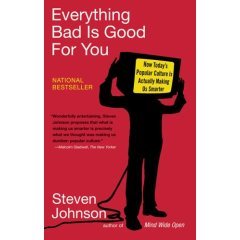Mass media is changing. Whether for better or worse the mass media will always continue to change. On March 15, I posted a comment Rupert Murdoch made while speaking in front of The Worshipful Company of Stationers and Newspaper Makers, which he said “It is difficult, indeed dangerous, to underestimate the huge changes this [media] revolution will bring or the power of developing technologies to build and destroy -- not just companies but whole countries.” As one of the last few remaining proprietors of the traditional mass media, Murdoch’s vision can be seen as being directly connected to the current trends in the mass media.
Over the past three months this blog has attempted to examine the emerging trends that are driving this ongoing media revolution. Certainly, there are numerous factors that have added to the powder keg that has become the world of mass media. The first ingredient in the revolution that is having a profound affect is the changing landscape of content that is being offered to viewers. From the progressive, this years Oscar nominees for best picture, to just plain garbage, FX’s Black.White., to the proliferation of consumer generated content, which include everything from blogs and podcasts to commercials and televised newscasts, the increase in the variety of content available to users is staggering. This change in the landscape of content has empowered users to stretch the boundaries of the entire concept of content. Stretching these boundaries has led to the emergence of new genres of content and has also led the way to the sophistication of some content.
As content becomes more engaging to the audience, the methods in which it is distributed and who it is being distributed to, is having a profound affect on the mass media. First, the way in which content ultimately reaches consumers has made the mass media continually more accessible during all parts of a person’s life. This influx of content availability is altering the way in which users will consume media. For example, users are confronted with a staggering amount of information on the Internet, however, increased searching capabilities coupled with an improved ratings system makes it easier to sift through mountains of information. Also the distribution of content is going mobile from iPods to cell phones to unsecured wireless networks, individuals are able to access all different sorts of information wherever and whenever they want. For creators of content it then is their charge to continue to understand that users will be continually confronted with information overload, even on the go, which means content will continually need to be improved.
Furthermore, with the increased channels of distribution available it will need to be understood by this “new media,” the shift in who is using this content. Aside from the ability of media companies (including advertisers) to reach this , who can now access content from wherever they want, there are changes among the demographics in America that are causing a shift in content. With the increasing of Internet aspect among African Americans and the shift in tastes among the Hispanic population, how these distinct user groups are reached and what messages will be appropriate for them.
Finally, one of the main trends this blog has focused on and is the main force driving the
media revolution is the Internet. The Internet has allowed users to access almost unlimited amounts of content. This has led to the debate of the concept of “net neutrality,” and whether or not certain content should be restricted to users. The resolution of this issue will have the greatest impact on the direction of the media revolution. If the ability to freely view content on the Internet is compromised, then the Internet could drastically affect the content available and the resolution of this debate will have a profound impact on the mass media. Currently, however, one of the growing trends is the inseparable relationship between traditional media and the Internet. This relationship is again helping to alter the content available to users. As an open communication forum the Internet allows the creators of the content to offer their users an increased form of interactivity unparalleled to other media, such as offering audio and video on a magazine’s webpage. Offering users this interactivity allows them to become involved with and to create content that can be easily distributed. Therefore, it becomes imperative to continue the flow of the media revolution the Internet must remain a two way dialogue between individuals who create content (whether that be large corporations or user generated) and the users who access it.
The majority of the emerging trends are due to the increases in technology and the development of content to match those increases. The Internet’s distinct role in helping to shape the “new media” revolution cannot be doubted, but no matter how much technology increases, whether it goes more mobile or connects at a higher speed, ultimately media still befalls to the content. The idea that the “media is the message” has been a steadfast ideal in the media world for numerous years, however, after analyzing the current trends is becoming more apparent that this old adage is not as strong as it once was. For instance, those fortunate enough to own a vide iPod know that at first it is exciting to be able to watch “South Park” on their iPod. Once this initial excitement is over it is no longer about being able to watch a show on an iPod and therefore become less about the media on which the content is displayed, and more about just watching “South Park,” the message. Therefore, in this world of “new media” if companies and individuals cannot create content that is compelling enough to warrant it filling the increasing space created by the Internet and its associated technologies, then it seems that idea behind Murdoch’s prediction for the media revolution will not come to fruition.
P.S. Thanks to everyone who has read my blog this far.

